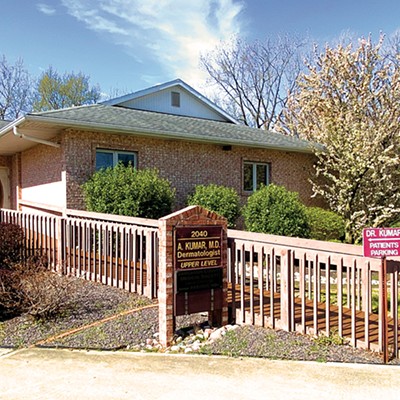Setting the facts straight about pensions
[
{
"name": "Air - MedRect Combo - Inline Content 1",
"component": "11490391",
"insertPoint": "3",
"requiredCountToDisplay": "1",
"parentWrapperClass": "fdn-ads-inline-content-block"
},{
"name": "Air - MedRect Combo - Inline Content 2",
"component": "11490392",
"insertPoint": "7",
"requiredCountToDisplay": "5",
"parentWrapperClass": "fdn-ads-inline-content-block"
},{
"name": "Air - MedRect Combo - Inline Content 3",
"component": "11490393",
"insertPoint": "12",
"requiredCountToDisplay": "9",
"parentWrapperClass": "fdn-ads-inline-content-block"
}
]
The media continue to publish inaccurate statements about the pension systems in Illinois. I would like to set the record straight.
What is TRS?
The Teachers’ Retirement System - established in 1939 by the state to protect retirement security of Illinois educators.
Why is there a problem with the pension funding?
Studies, task forces, etc., have all concluded the same thing: the state has not paid its required contributions. In 1996 legislators recognized this and passed a law requiring an increase in contributions each year to bring the pensions up to their required funding level of 90 percent. Then the legislators broke the law and made partial payments. Think of it like your credit card bill – if you fail to make a payment or merely pay the minimum, you are assessed fees, thereby increasing your bill. That is what the state of Illinois has done to itself.
For 2011, the state owes TRS $2.4 billion. Only $715 million would be required to pay this year’s contribution if the state had been paying its bill each year. But, another $1.7 billion is needed to make up for past unpaid costs.
Do teachers contribute to their pension?
Absolutely – teachers and administrators contribute 9.4 percent of salary every year of employment. And school districts contribute .58 percent of total payroll. State contributions and investment returns add to the fund.
Since 1940, teachers and districts have paid 100 percent of their required contributions every year.
Do teachers get Social Security on top of their pension?
No, a decision made many years ago by the state ruled that Illinois would not be a Social Security state when it came to its teachers. Teachers do not pay into Social Security. In fact federal laws, known as Government Pension Offset (GPO) and Windfall Elimination Provision (WEP) actually reduce a Social Security benefit a teacher earned in previous work and reduce any survivor benefits earned by a spouse. (These provisions have actually caused some people in the business world to dismiss the idea of moving into education.)
Wouldn’t it be cheaper to put teachers into Social Security?
No. Under Social Security, a teacher would pay 6.2 percent of salary; the district would pay a matching 6.2 percent. Currently, a teacher pays more: 9.4 percent and the district pays less: .58 percent. The district is required to pay less so more money can be used for educational needs of students.
A 2007 study showed that moving teachers into Social Security would cost school districts an additional $3 billion in the first 10 years (from 2008-2018). If Social Security had been implemented back in 2004, the additional cost would have been more than $900 million a year.
What about moving teachers into a defined contribution plan (commonly known as a 401k)? First, there are questions about how this could be done when the state decided years ago that teachers would not be a part of Social Security since they are given a defined benefit pension.
Second, the state would actually see an increase in what is owed to TRS. The current retirees would need to be paid as per law; yet, without contributions coming into the system from active teachers, the state would need to make up the difference. A 2008 estimate put that additional cost at more than $25 million in just the first year.
And, the underfunded amount has not been addressed and would still need to be paid.
Aren’t pension benefits high?
Out of 87,000 retired teachers in Illinois, 17,269 receive a pension that’s less than $20,000. A few administrators (only 2 percent of retirees) receive large pensions of more than $100,000.
Remember that people receiving a pension have spent up to 35 years educating students and are reliant on the pension promised to them many years ago by the state.
Cinda Klickna taught at Southeast High School, serves as secretary-treasurer of the Illinois Education Association, and is a trustee of the Teachers’ Retirement System.
What is TRS?
The Teachers’ Retirement System - established in 1939 by the state to protect retirement security of Illinois educators.
Why is there a problem with the pension funding?
Studies, task forces, etc., have all concluded the same thing: the state has not paid its required contributions. In 1996 legislators recognized this and passed a law requiring an increase in contributions each year to bring the pensions up to their required funding level of 90 percent. Then the legislators broke the law and made partial payments. Think of it like your credit card bill – if you fail to make a payment or merely pay the minimum, you are assessed fees, thereby increasing your bill. That is what the state of Illinois has done to itself.
For 2011, the state owes TRS $2.4 billion. Only $715 million would be required to pay this year’s contribution if the state had been paying its bill each year. But, another $1.7 billion is needed to make up for past unpaid costs.
Do teachers contribute to their pension?
Absolutely – teachers and administrators contribute 9.4 percent of salary every year of employment. And school districts contribute .58 percent of total payroll. State contributions and investment returns add to the fund.
Since 1940, teachers and districts have paid 100 percent of their required contributions every year.
Do teachers get Social Security on top of their pension?
No, a decision made many years ago by the state ruled that Illinois would not be a Social Security state when it came to its teachers. Teachers do not pay into Social Security. In fact federal laws, known as Government Pension Offset (GPO) and Windfall Elimination Provision (WEP) actually reduce a Social Security benefit a teacher earned in previous work and reduce any survivor benefits earned by a spouse. (These provisions have actually caused some people in the business world to dismiss the idea of moving into education.)
Wouldn’t it be cheaper to put teachers into Social Security?
No. Under Social Security, a teacher would pay 6.2 percent of salary; the district would pay a matching 6.2 percent. Currently, a teacher pays more: 9.4 percent and the district pays less: .58 percent. The district is required to pay less so more money can be used for educational needs of students.
A 2007 study showed that moving teachers into Social Security would cost school districts an additional $3 billion in the first 10 years (from 2008-2018). If Social Security had been implemented back in 2004, the additional cost would have been more than $900 million a year.
What about moving teachers into a defined contribution plan (commonly known as a 401k)? First, there are questions about how this could be done when the state decided years ago that teachers would not be a part of Social Security since they are given a defined benefit pension.
Second, the state would actually see an increase in what is owed to TRS. The current retirees would need to be paid as per law; yet, without contributions coming into the system from active teachers, the state would need to make up the difference. A 2008 estimate put that additional cost at more than $25 million in just the first year.
And, the underfunded amount has not been addressed and would still need to be paid.
Aren’t pension benefits high?
Out of 87,000 retired teachers in Illinois, 17,269 receive a pension that’s less than $20,000. A few administrators (only 2 percent of retirees) receive large pensions of more than $100,000.
Remember that people receiving a pension have spent up to 35 years educating students and are reliant on the pension promised to them many years ago by the state.
Cinda Klickna taught at Southeast High School, serves as secretary-treasurer of the Illinois Education Association, and is a trustee of the Teachers’ Retirement System.
Illinois Times has provided readers with independent journalism for almost 50 years, from news and politics to arts and culture.
Your support will help cover the costs of editorial content published each week. Without local news organizations, we would be less informed about the issues that affect our community..
Got something to say?
Send a letter to the editor and we'll publish your feedback in print!


















